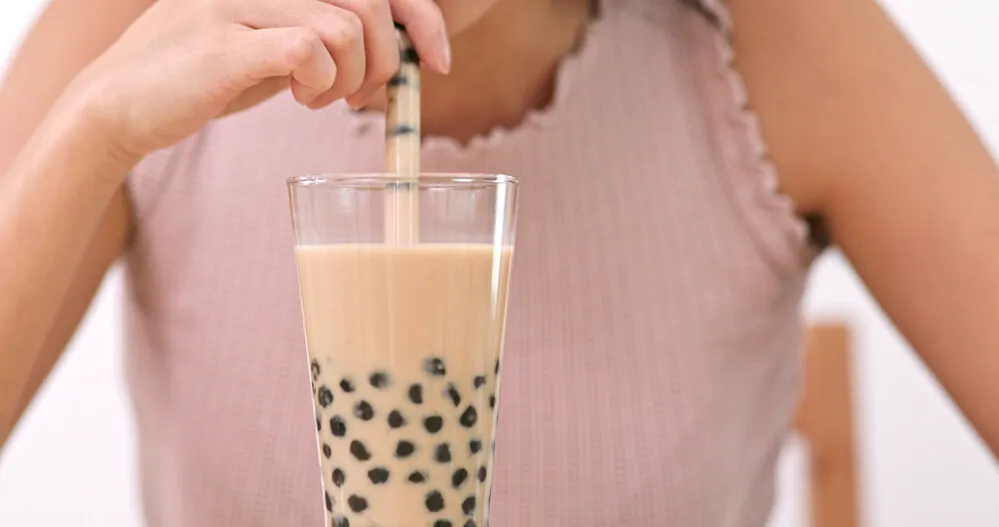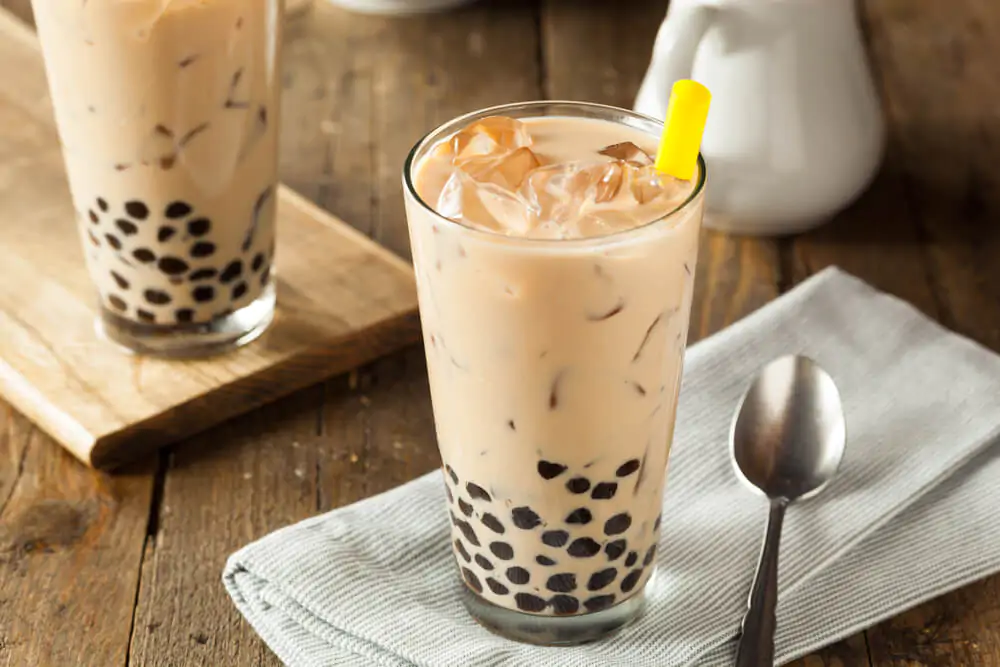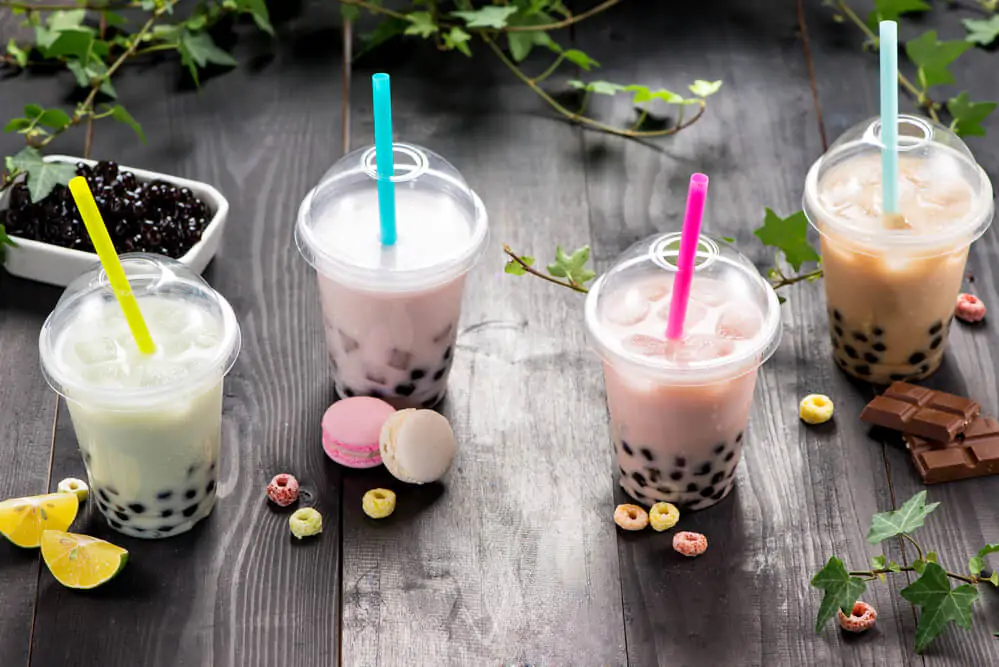Bubble tea is a delicious drink, but what are the black balls in bubble tea? Read on to learn more about them.

Bubble tea is a delicious trend in the tea-drinking world. It is flavored tea with milk, sugar, and little black balls inside.
However, if you’re not used to it, these black balls can be a little disconcerting. What are they, anyway? Why are they in bubble tea?
The black balls in bubble tea are balls of tapioca starch, also known as boba. Boba can be another name for the bubble tea itself and the bubbles within it. The boba balls are also called “tapioca pearls” at certain bubble tea places because of their pearl-like shape and ingredients.
Essentially, the black balls at the bottom of bubble tea are the reason that bubble tea exists! Boba pearls are essential to the tea market and come in various flavors, textures, and colors. The bubble tea industry in America continues to grow as the drink becomes more and more popular.
What Are The Black Balls In Bubble Tea?

The “bubbles” at the bottom part of the bubble tea are little balls of tapioca or cassava starch, known as boba. The starch is molded into little balls and heated to get the gooey, chewy flavor. The process of making the balls is interesting.
Tapioca starch is made from the cassava root, a healthier option than many other starches. The pulp is separated and dried until it becomes a powder. This natural thickener is what is combined with water, molded, and heated to make tapioca pearls.
While it’s still hot, boba is put into the bottom of cups and covered in cold tea. Combining these two temperatures makes the outside of the pearls thicken, and the insides stay soft and chewy. This chewiness adds to the lasting popularity of boba in Thai milk tea.
Read our guide to the best tapioca pearls for Boba tea.
Boba Variety

Initially, there was just one flavor of boba bubbles: tapioca starch. However, as bubble tea becomes more popular, a wider variety of boba tea flavors has arisen.
There are different flavors of tapioca pearls, still made from the same starch but flavored differently. You can find fruit-flavored, coffee-flavored, or spice-flavored boba at various tea shops.
Exploding boba is a newer trend, where the gelatinous outsides of the boba stay the same, but instead of tapioca starch on the inside, customers can have fruit-flavored jellies. Instead of being chewy, these pop in your mouth and cause a small flavor explosion.
With the combination of boba flavors and tea flavors, it’s a memorable drink. Boba tea can be made hot or cold too. It’s a delicious trend and doesn’t show any sign of slowing down soon.
If you liked this post, you might find our guide on how to cook tapioca pearls for bubble tea useful.
Boba: A Brief History
Boba tea is the popular name for the tea itself, but the boba balls are the “bubbles” or “pearls” within. Milk tea, the base of most boba tea, is a famous Taiwanese drink.
It’s made of tea sweetened with milk and sugar and can be found at many Thai and Asian restaurants. There is some debate about whether boba tea is healthy.
Tapioca balls are a typical dessert in Eastern Asia and have been for many years. They haven’t always had the same shape and texture as they do in bubble tea, but once someone thought to combine the sweetness of milk tea with the stickiness and pop of tapioca balls, the industry took off.
Boba tea became popular and crossed the ocean to the United States. Bubble tea has taken off and spawned many varieties since. Still, many people prefer the original flavor of plain tapioca starch, popped into the bottom of a sweet milk tea drink.

